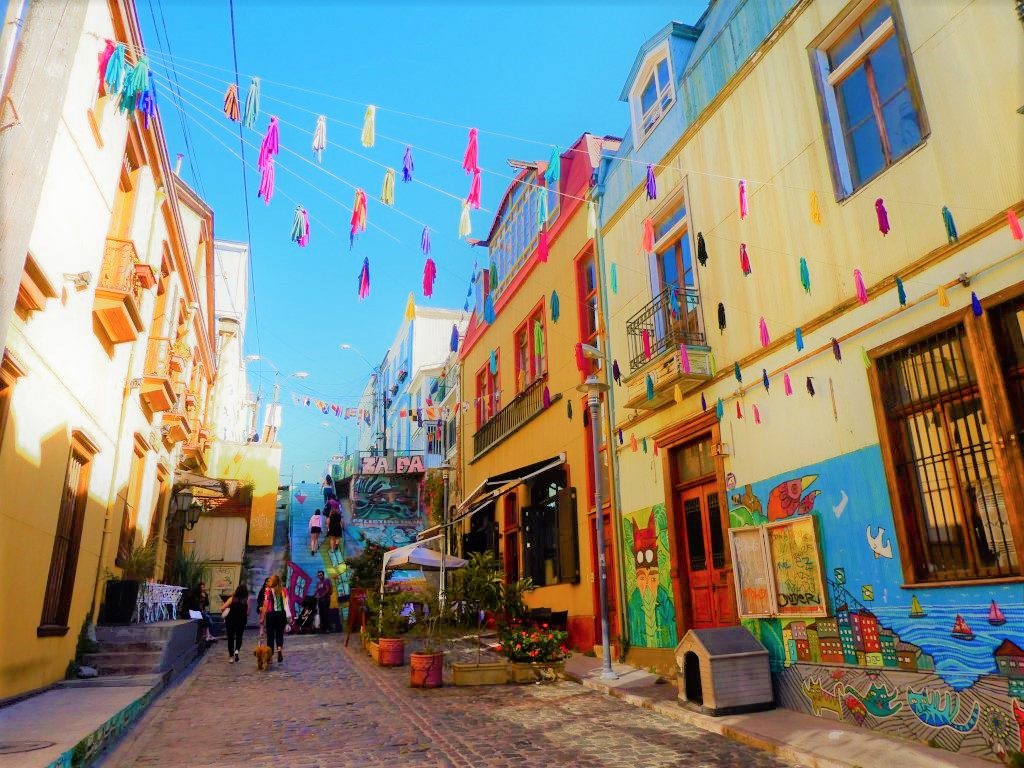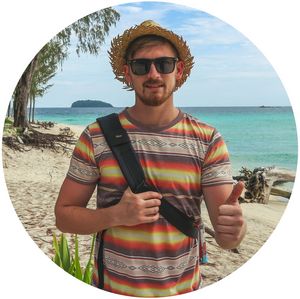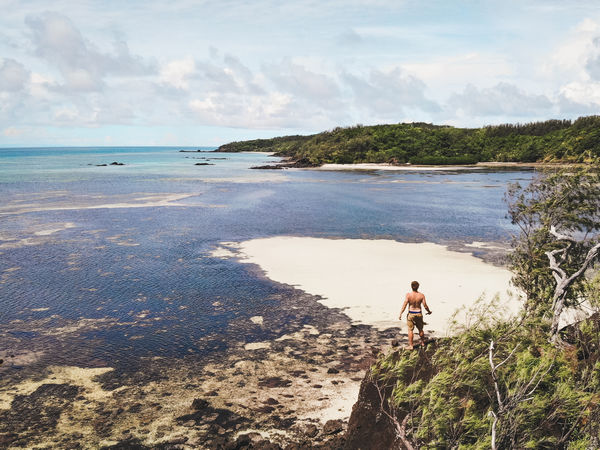10 Amazing Places to Visit Near Santiago, Chile
Santiago dips its feet in the Pacific Ocean and keeps its head high in the Andes mountain ranges. It’s a cultural hub, the nerve center of the longest country on the South American continent.
You could easily spend weeks in Chile’s capital, enjoying its modern vibes, its cultural offers, its safety. But the reason Santiago charms many foreigners and Chileans alike is its proximity to a really diverse set of landscapes and activities.
In a country so stretched that it can take up to a whole day to travel from one place to the other, it’s good to know that there are a whole bunch of amazing places to visit near Santiago de Chile.
[toc]
Bahá’í Temple
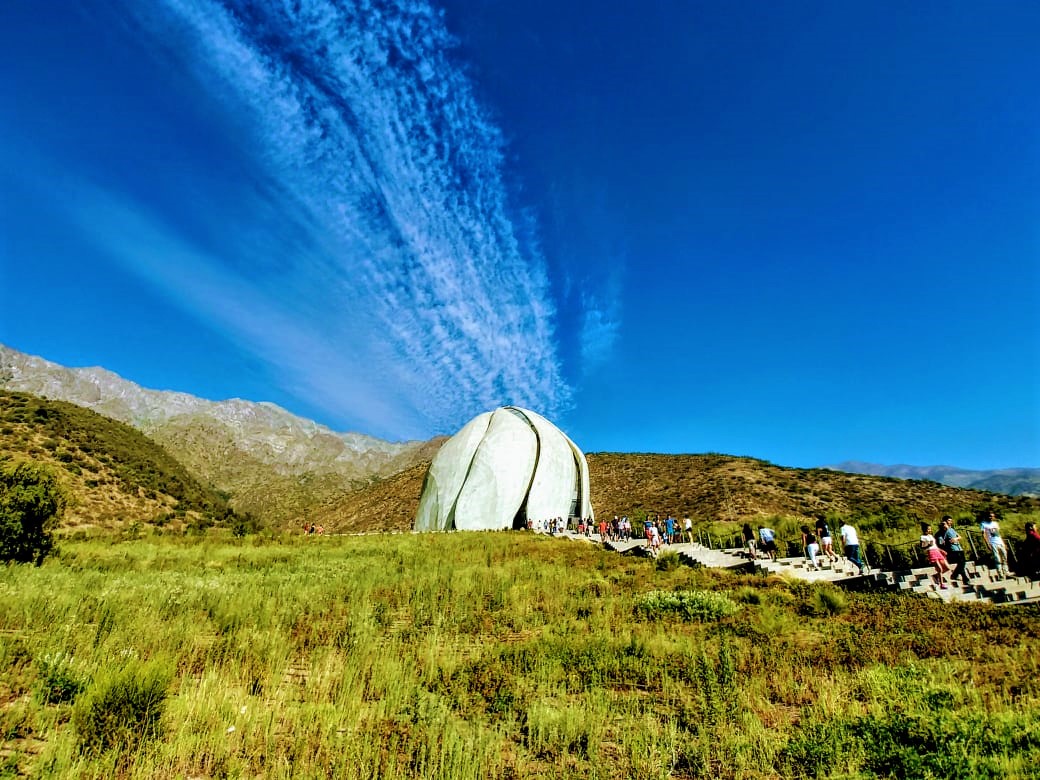
The first item in this list of places to visit near Santiago is also the closest. The Bahá’í Temple is only a short walk or bike ride from the outskirts of Santiago, east of the city. It’s a place of worship for a minor Persian religion, which promotes unity and equality. If you’re interested in learning more about it, visit their website.
Besides the religious aspect, the Bahá’í Temple is interesting for its architecture and for its location. It’s a modern dome with a very peculiar design, open to everyone. Remember, it’s important to enter respectfully. The temple is situated on top of a hill overlooking Santiago, giving one of the best views on its skyline.
What to do there:
- get rid of that greasy street food by riding a bike up the hill
- visit the temple and its gardens
- meditate
How to get there from Santiago:
Depending on the traffic and where you depart from, a car ride can take between 20 minutes to 1 hour; that’s probably not the best option. By bus, you must take one that goes to Avenida Grecia – it can take between 30 minutes and 2 hours. Alternatively, rent a bike; I swear that the way back down is worth every effort!
Maipo Canyon
This is a gorgeous landscape of mountains, forest, and river, with a volcano as a background; perhaps the most stunning piece of nature around Santiago. Even better, it is close by!
The Maipo Canyon “Cajón del Maipo” is a beloved weekend gateway of many a Santiaguino (people from Santiago). It caters to many visitors with a range of activities to enjoy a day out in nature. In winter (June to August), snow falls and covers the mountains, allowing refreshing ski sessions.
If you want to spend more than a day in these surroundings, there are accommodations and camping places.
What to do there:
- hiking, horse riding
- rafting, bungee jumping, canyoning
- skiing and other snow activities (only in winter)
- stargazing
- thermal baths
Note: Bring sunscreen, a hat, and a wind jacket, as it can be quite hot in the sun and turn very cold in the shade.
How to get there from Santiago:
There’s a direct shuttle bus leaving from outside the metro stations Bellavista de la Florida, Las Mercedes, and Plaza de Puente Alto. By car, it’s a bit more than 1 hour to the closest hamlet called El Melocotón; the road itself is worth sightseeing so it will take longer than that. You can also book a day tour from a professional agency.
Altos de Cantillana
One of the many nature reserves around Santiago is the Cantillana mountain, 70 km to the south. It offers a trek we heard much about but couldn’t do ourselves, for lack of time. From up there, you have a 360º panorama on the valleys and the Andes. Our Chilean friends told us that the best time to visit is in May when the oak trees turn the landscape to red.
It’s a fairly easy hike, without particular skills needed and at no great altitude. It requires two days and a tent if you want to do the whole 40 km circuit (20 km to the top, and another 20 km back). If you have only one day, it’s also possible to go and simply turn back whenever you want part way along the track.
If you decide to go for it, this very precise description will come in handy.
What to do there:
- the trek!
- wild camping
Note: There is an entrance fee and an additional charge for camping inside. To visit, you need to book by email or telephone: contact page. There’s no shop, no accommodation and it’s forbidden to make fires.
How to get there from Santiago:
The trek starts near Laguna de Aculeo and brings you to the summit. To get there by bus, take the one saying “Aculeo-Rangue” in San Borja bus terminal. They leave every 30 minutes and should take around 90 minutes. By car, it takes 1 hour along Route 5; turn right on G-546 south of Paine.
Valparaiso
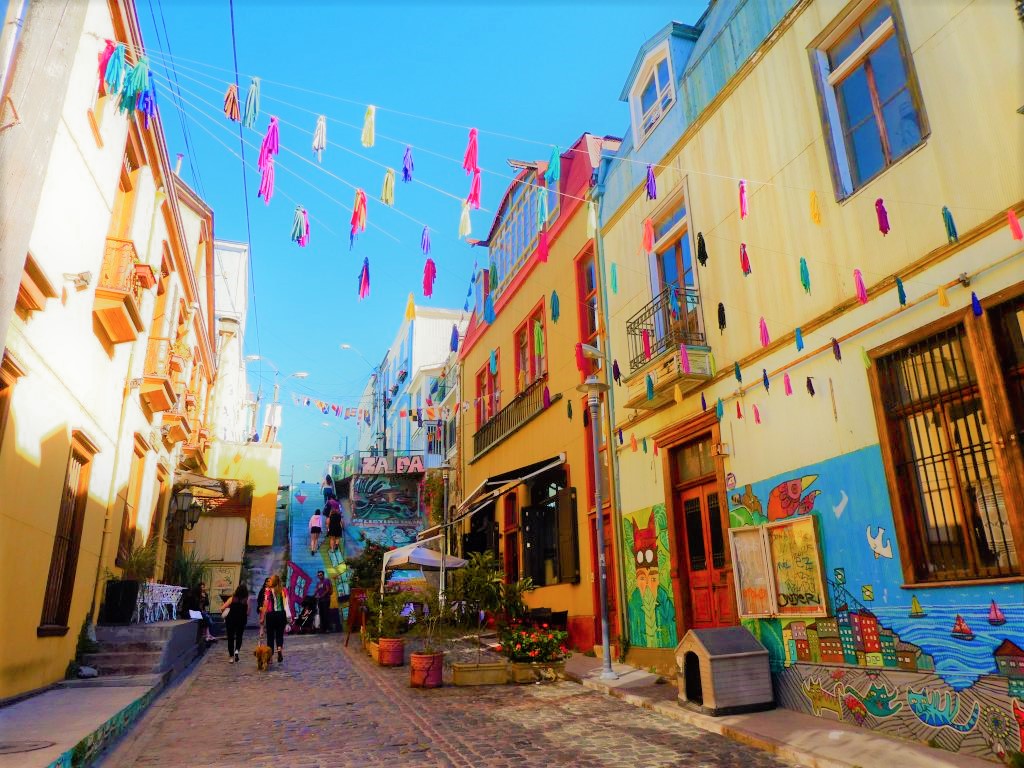
Much could be said about Valparaiso, Chile’s main harbor and one of its trendiest towns. It would certainly deserve its own article and more than one day to visit. Having said that, it’s so close to Santiago that you can certainly go and come back on the same day; as it’s only a 2 hour bus ride.
Valparaíso, “la ciudad de los 1000 colores”, is indeed a colorful town built on the hills directly overlooking the sea. Its historic quarter is a UNESCO World Heritage site, however, the modern part of the center is buzzing with such life that it might have you considering to live there.
Famous for its colourful murals that will please all street art fans, “Valpo” (as it is known in Chile) is a university town that offers many cool eating and going-out options.
What to do there:
- Walk up the hills to amazing sea views or take century-old funiculars
- Fill your memory card with street art shots
- Watch the sea lions on the oceanfront
- Attend an event in one of the abandoned factories
- Enjoy a vegetarian, vegan or simply sustainable meal at one of the community-based eateries
- Visit Palacio Baburizza, a very good fine arts museum on Paseo Yugoslavo
Check here a list of more things to do in Valparaíso.
How to get there from Santiago:
As we’ve said, it’s only a 2 hour bus ride from Santiago to Valparaíso. There are buses leaving every 10-20 minutes from the bus terminal Pajaritos. The bus terminal in Valparaíso is at a walking distance from the town center. By car, it’s a 90 minute drive on Route 68.
Viña del Mar
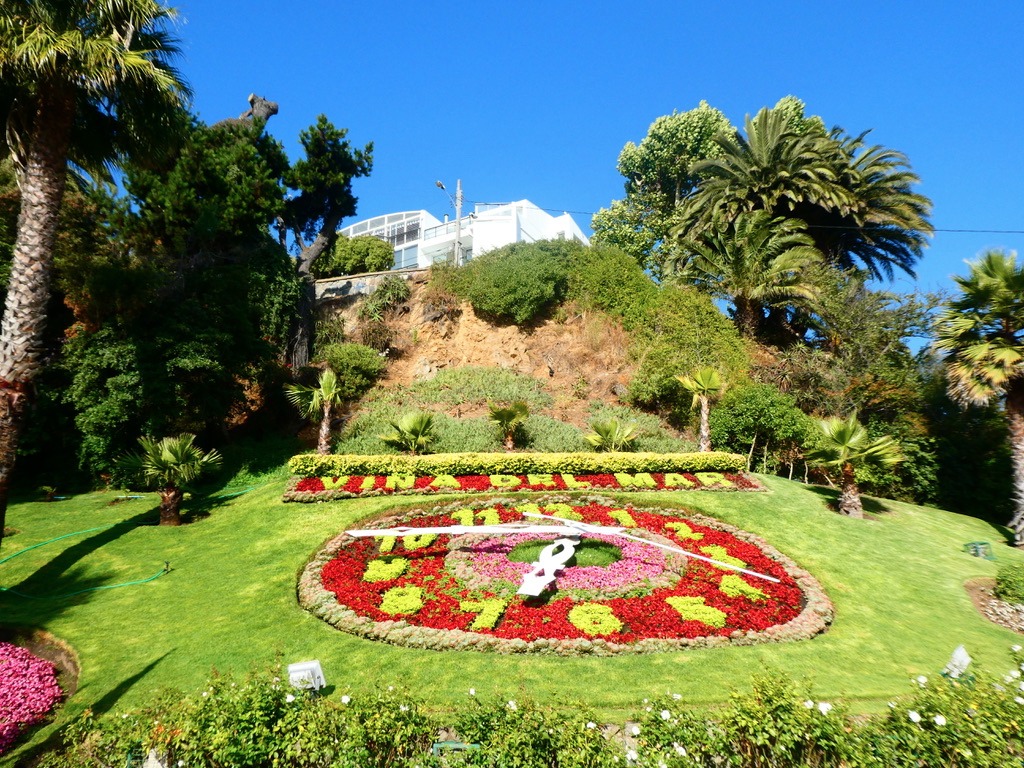
The seaside town of Viña del Mar is only a stone’s throw from Valparaíso; in fact, it lies in its direct continuity along the coast and you can go from one to the other without noticing it. It’s the usual beach town for locals and it can get crowded at the weekends.
Despite being so close to each other, Viña del Mar and Valparaíso have a completely different aura. While Valpo is “raw” and colorful, Viña is clean, tidy, and even a bit posh in parts. The oceanfront is a swirl of flâneurs and street vendors and is lined with bars, restaurants and night clubs. The main street, Avenida Libertad, has a more local feel, with many small shops and eating places.
The best is to explore both Valparaíso and Viña del Mar together while you’re in the area. However, it would be a mistake to dedicate only one day of your travels for both: one day in each is really a minimum.
What to do there:
- Sunbathe at El Sol beach
- Have a stroll on the seaside
- Relax at the Quinta Vergara city park
- Take a selfie at the flower clock, or alternatively…
- …Have fun at people taking a selfie at the flower clock
- Observe the fishermen and -women at the Vergara pier in the evening
How to get there from Santiago:
Same as for Valparaíso, there are frequent buses going from Santiago to Viña del Mar. Buses depart Santiago from the same Pajaritos bus terminal. By car, it’s a 90 minute drive on the Route 68.
Wine tour
Chilean wines have reached worldwide fame and are ranked among the best “new world” wines. We certainly like them! But fair play, we’re not very fussy with our wines. Why not indulge in some wine tasting during your stay in Santiago?
There are several wine regions around Santiago: the Maipo valley near Puente Alto, only 30 km to the south of the capital’s center; the Aconcagua valley near Los Andes, 80 km to the north; and the valley around Casablanca, 80 km to the west. Some of the vineyards can be visited independently, others require a day tour with an agency.
If you’re at a loss to decide, we recommend the Casablanca region. There are more producers there, including the world’s biggest organic and biodynamic vineyard.
Laguna Verde
There’s a wide variety of beaches in a country that has 6,435 km of coastline. If the liveliness of Viña del Mar’s city beach isn’t for you, try the more secluded ones in the area.
An easy option is Laguna Verde, a mere 30 minute ride south of Valparaíso, and 90 minute trip by car from Santiago. We say it is easy because it’s very accessible, however, still usually not crowded.
Laguna Verde is a small-town beach with small-town flair. It is very relaxing after the hubbub of Santiago, but not a wild adventure either.
What to do there:
- chill at the beach
- eat a humita at one of the local eateries
- have a stroll along the El Sauce estuary
How to get there from Santiago:
By bus, you will first need to reach Valparaíso (see above); then take the local bus number 520 in direction of Laguna Verde – Playa Ancha. Take that 2nd bus opposite Plaza O’Higgins (right next to the bus terminal). The whole route should take around 3 hours. Of course, it’s faster by car – about 90 minutes along the routes 68 and 60.
Playa las Docas
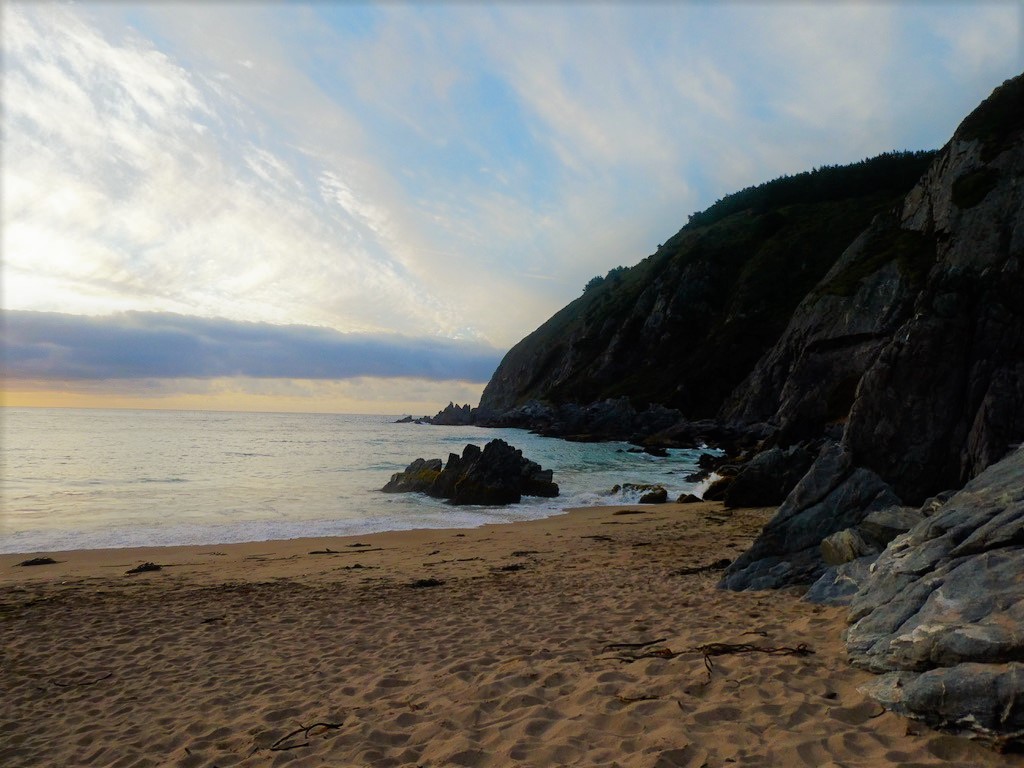
If you want to escape the city buzz, then one of the best places to visit near Santiago is called Playas las Docs. This is a very secluded beach that attracts a fair amount of Santiaguinos and Porteños (people of Valparaíso). You can get there only by car along a narrow curvy path that brings you directly to the ocean. There are a few shops on the way and one on the beach that closes in the evening.
People’s favorite activity on Playa Las Docas is wild camping. It’s allowed, as long as you don’t litter or damage the environment. The beach isn’t very large, but there’s a second part behind the rocks on the right, where few people go. A stroll at night, with the sound of the waves, the shadows of all the tents, a couple of dying fires and the voices of people… it’s a sight to behold!
Note: There is a parking fee but no fee to camp. Nearby shops tend to be pricey so bring your own stuff from the city.
What to do there:
- Bathe, sunbathe, wild camp, cook on the fire
How to get there from Santiago:
There is no public transportation to reach the beach. By car, it’s a 90 minute drive until Laguna Verde (see above), then 30 minutes more on route F-98. It’s a good idea to use a GPS as there’s no main road. Be careful! The way to the beach is steep, curvy and narrow, and has no asphalt.
Aconcagua
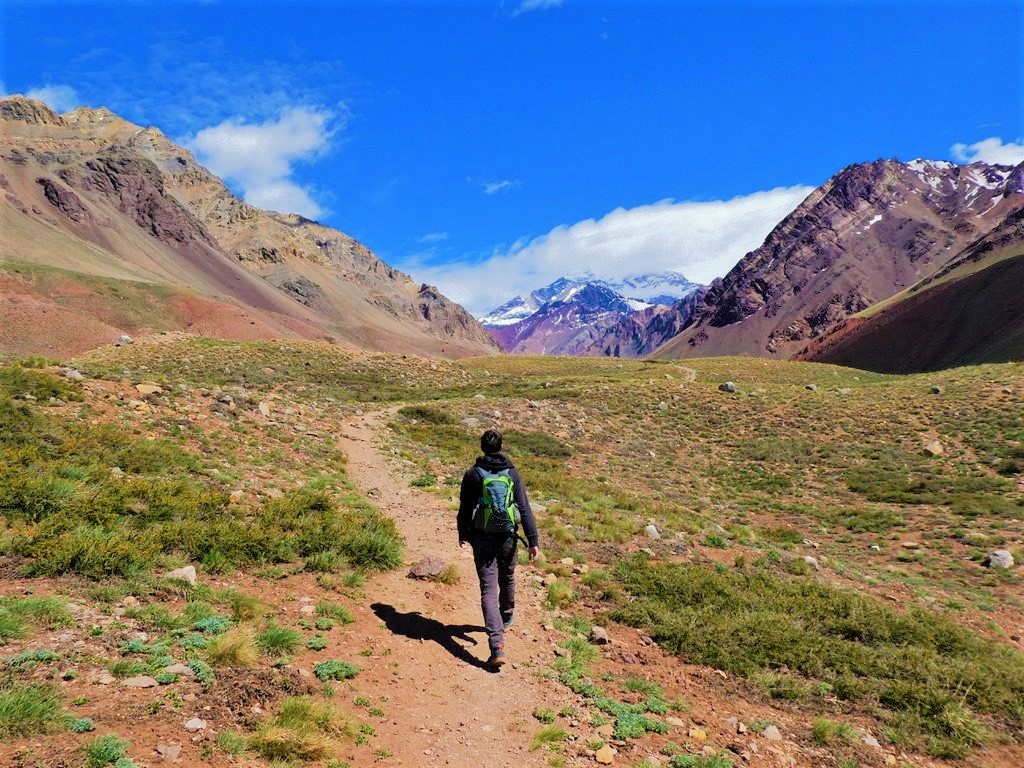
The Aconcagua mountain is a massive jewel. Towering at 6,960.8 meters, it’s the highest peak in the Americas, in fact, it’s the planet’s highest outside of Asia. A nature provincial park has been established at its feet, offering several kinds of treks for all levels.
Experienced mountaineers can revel in 15-20 days hiking up and back. From what we heard, the ascent isn’t particularly difficult but requires essential acclimatisation to the altitude.
Casual hikers like us can still enjoy a day hike in the Aconcagua Provincial Park. You have the choice between a 4-hour flat stroll on moon-like terrain around a lake nestled between the mountains; and a 7-hour cozy hike past that lake and deeper into the mountain range. Considering the price to enter the park, we highly recommend the second option, which is fairly accessible.
Note: Keep in mind that you’re crossing a border; don’t forget your passport and be ready to wait, especially on the way back into Chile.
What to do there:
- 1-day trek around the Horcones lake
- 1-day trek to the Confluencia base camp
- camping at Confluencia for more days hiking in the park
- 15-day trek to the summit
- see the hot springs and the rock formation at Puente del Inca
How to get there from Santiago:
To get to the Aconcagua Provincial Park, you have to reach Puente del Inca, the closest town to the entrance.
Although there are buses going all the way to Mendoza, Argentina in 7 hours, we’re not sure if it’s possible to buy a ticket for Puente del Inca and get off mid-way. By car, it’s a 3 hour head-spinning drive to the park’s entrance, through the Andes mountain range. The road itself is worth the journey! It’s also possible to book a 1-day tour from Santiago with an agency.
Pichilemu
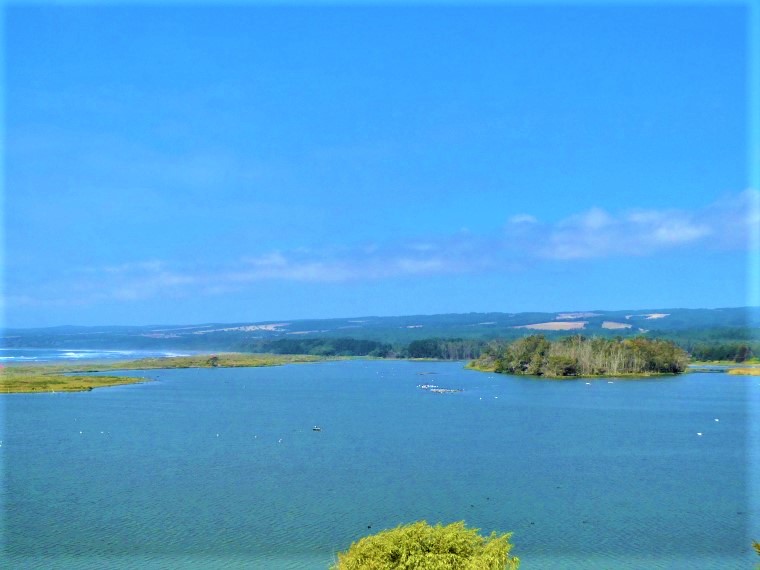
The somnolent seaside town of Pichilemu wakes up in the summer (December to February) to welcome national and international surfers. It’s a small town with not much to offer except perfect surf spots for all levels; several lakes where many species of birds gather; and the best seafood of the region.
Pichilemu is one of the best spots in South America to learn to surf. Many surfers love the nearby Punta de Lobos beach, but there are several schools in town too. If you play your cards well, you could even volunteer in a hostel in exchange for surf lessons for free!
What to do there:
- surf, mainly
- have a stroll around Laguna Petrel, right next to the town
- bird watching at Laguna El Ancho
- hitchhike to the beach of Punta de Lobos (20 minutes South of Pichilemu)
How to get there from Santiago:
There are frequent buses leaving Santiago from Terminal Alameda; the journey takes about 4 hours. By car, the longest but fastest way takes about 3 hours; follow Route 5 until San Fernando, then turn right on Route 90.
….
We’re sure there are still many more places to visit near Santiago. Surrounded by such diverse nature, there’s probably enough to get you going a lifetime. We hope this list will be a good inspiration for your stay in the heart of Chile.
Considering you will be jumping from mountains to beaches you will need to pack a whole range of clothes for both cold and hot weather. I highly recommend checking out this tried and trusted South America packing list so that your luggage doesn’t go hugely oversize.
This is a guest post contributed by Anna and Anthony who are long-time travelers, polyglots and all-kinds-of-art aficionados. They write about eco travels, nature hikes and cultural discoveries for backpackers to South America, on their travel blog Green Mochila. Be sure to follow them on Facebook, Twitter, and Instagram for regular travel tips and updates.

